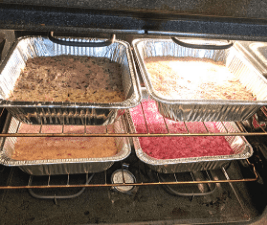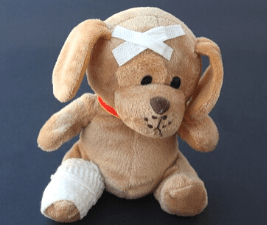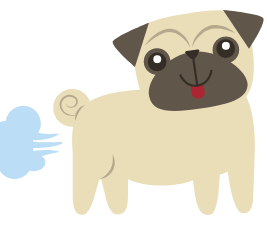It occurred to us, during our once-a-month dog-food-making marathon, that most pet dogs eat better than we do. It’s a tribute to the care and love that most pet owners lavish on their dogs – and we think it’s true. When was the last time your dog ate “junk food” for a meal? We’re not talking about sharing a cheese puff or two. We’re talking about that dog food bowl being full of “empty calories!”
People eat junk food all the time. But they would never give it to their dogs on a regular basis. Why?
It’s easier for the dogs
When you think about it – wouldn’t it be just great if all you had to do was show up for a meal and it was presented to you? No shopping, no preparation, no work, and no bill at the end! It seems like our dogs have it made!
Whether your dog’s food is a high-quality packaged food (check dogfoodadvisor.com to see how your brand rates), or home-made, we’re confident our dogs are getting complete, nutritious food. When was the last time you can honestly say you got all the fruits and veggies the FDA recommends?
So, our dogs eat better. The commercial dog food manufacturers have to meet standards to market their products widely. We may not always admire some of their ingredient choices, but they do provide for dogs’ nutritional needs.
And those of us making dog food at home know we’re responsible for the meeting our dogs’ dietary needs and get lots of help – from experts like Judy Morgan, D.V.M., Lew Olson, even social media groups devoted to helping each other out with recipes and techniques. For example: did you know you can save the shells from hard-boiled eggs in the freezer, grind them into powder, and add to your dog’s food as a source of calcium?
Junk food junkies
Of course our dogs, like most, get to share when we have snacks. We’ve never met a dog who didn’t love popcorn (hold the butter!). But we’ve also never met a dog who didn’t love carrots, or frozen green beans. They don’t know it’s healthy food. They just know if you’re giving it to them, it’s got to be good! We only carry treats that are good for dogs – we just don’t tell them that part of it.
During the pandemic, with options restricted and choices limited, many people started preparing their own meals more than ever. And we’re thoroughly sick and tired of it. We think that’s why we’ve seen an explosion of prepared-and-delivered meal companies.
Much as we’d like to hand over the responsibility to somebody else – we’re afraid we just can’t justify it. If we didn’t before, we now know how to put a (human) meal together in very little time.
Planning means dogs eat better
Planning ahead is the hiccup in the system. We know when we’re running low on dog food that it’s time to either go get it, or make it. For ourselves, we can always “grab something.” And that something isn’t always the healthiest choice – it’s what our taste buds dictate that day.
Another major difference – dogs don’t seem to care whether they eat the same thing, every meal, every day. Ours certainly disappear their food in record time. Every time – morning and night, seven days a week. They don’t seem to care that it tastes the same as it did last time. And the same as it will next time.
Dogs eat better, but taste worse
We may be saying it wrong. It’s more accurate that our dogs eat healthier than we do. That’s what responsible dog owners do.
The repetition would get old, fast, for people. It turns out that we have dogs beat as far as tasting goes. According to research, dogs only have about 1700 taste buds. People have about 9,000!
So while our dogs can out-sniff us all day long – we have the advantage in sensing taste. Which, considering the disgusting stuff we’ve seen dogs try to consume, is a very good thing.












